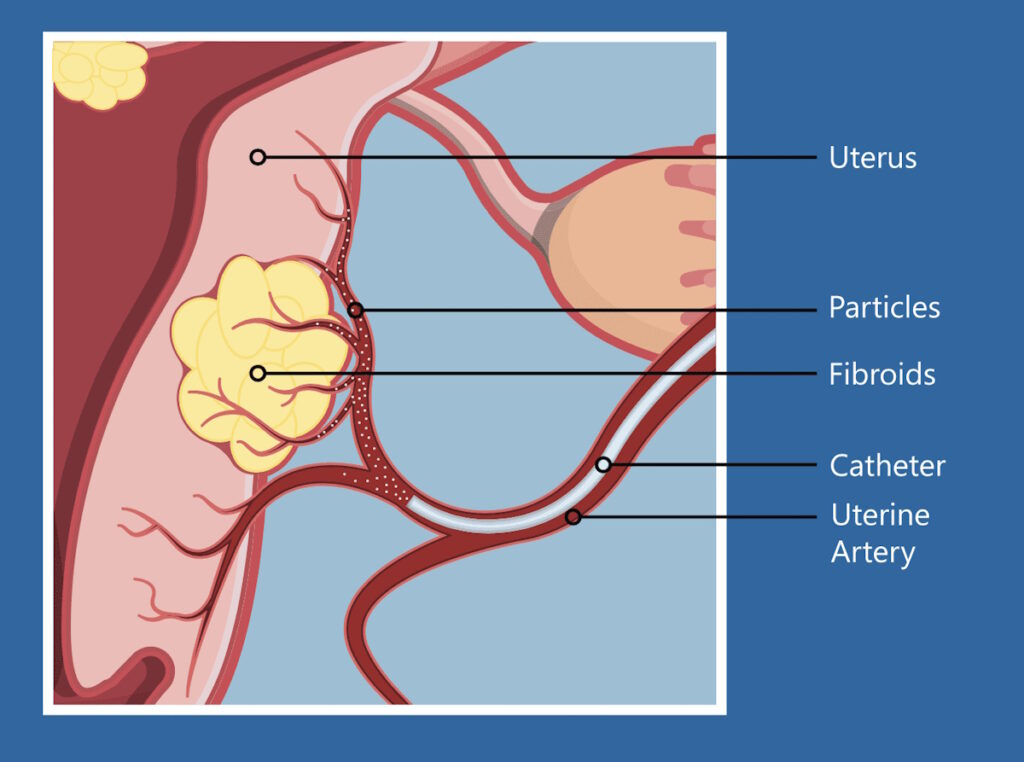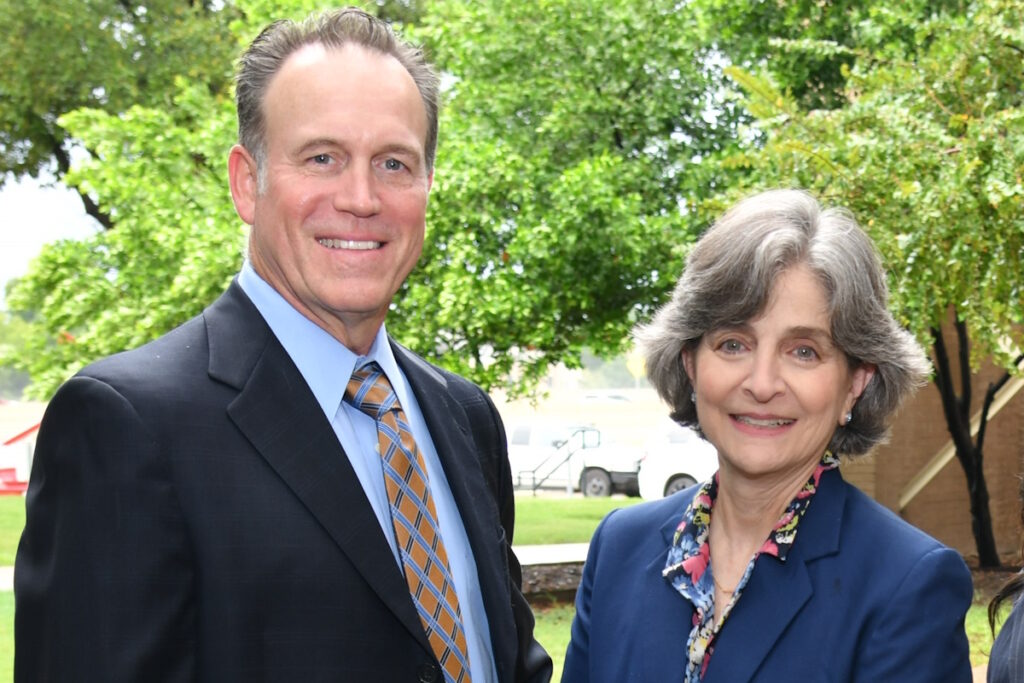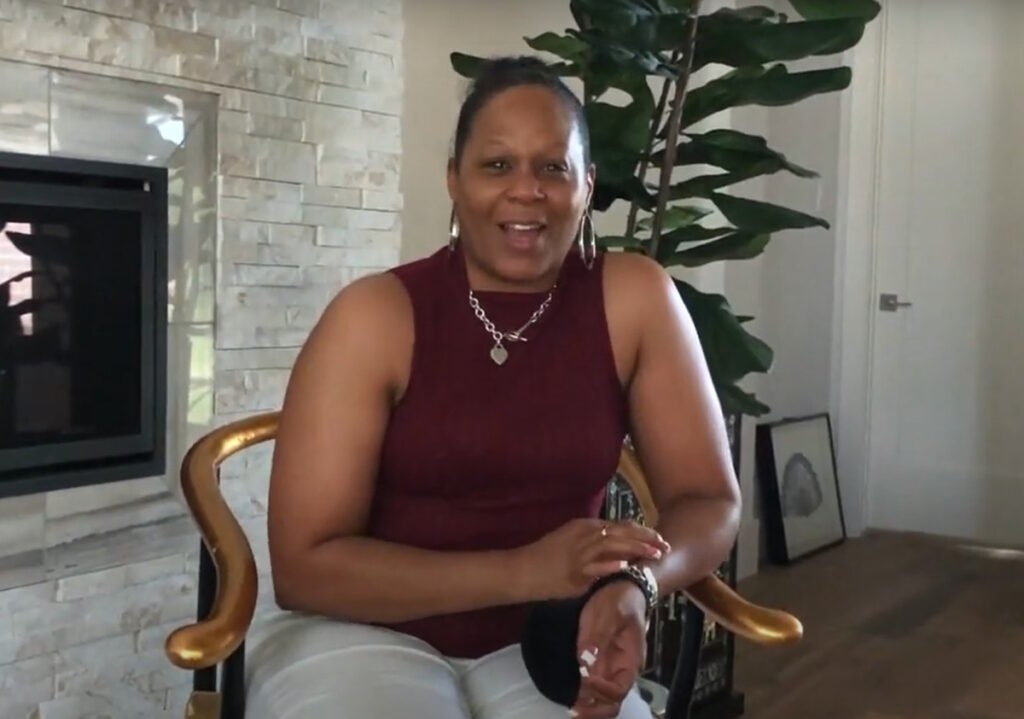Have you ever experienced a life changing moment of serendipity? Fibroid symptom patient Sherri* has! Working as a Lyft driver, Sherri picked up a passenger in Dallas, Texas. On the way to the airport, she started a friendly conversation with the passenger. That passenger was none other than Dr. Suzanne Slonim, medical director and founder of Fibroid Institute Texas! When Dr. Slonim shared that she was an interventional radiologist helping women with non-surgical fibroid treatment, the driver knew that this fare was fate. Years after myomectomy surgery for fibroid removal, Sherri’s fibroids—and the extremely heavy bleeding they caused—returned. It was time to conquer her fibroids and get her life back, but she didn’t know her options. Did this empowering, compassionate passenger have the answer?
Years ago, Sherri had a myomectomy to remove fibroids from her uterus. Unfortunately, she was experiencing fibroid symptoms again, indicating that she was having a recurrence of uterine fibroids. “My symptoms were horrendous,” Sherri explains. She had excessive, heavy bleeding during her cycles. She also passed large blood clots. Even when she wore both a pad and a tampon, she soaked through and endured embarrassing leaks. Sherri knew that she needed to address her returning fibroids but did not want to undergo surgical myomectomy another time.
Sheri’s Fibroid Symptoms
- Excessive, heavy bleeding
- Passed large blood clots
- Had to wear both pad and tampon at same time
- Soaked through clothes and endured embarrassing leaks
- Pelvic pain
- Symptoms interrupting her life
Years ago, Sherri had a myomectomy to remove fibroids from her uterus. Unfortunately, she was experiencing fibroid symptoms again, indicating that she was having a recurrence of uterine fibroids. “My symptoms were horrendous,” Sherri explains. She had excessive, heavy bleeding during her cycles. She also passed large blood clots. Even when she wore both a pad and a tampon, she soaked through and endured embarrassing leaks. Sherri knew that she needed to address her returning fibroids but did not want to undergo surgical myomectomy another time.
What Is A Myomectomy?
Myomectomy is the surgical removal of uterine fibroids. Though the uterus remains intact, myomectomy is like hysterectomy in that it is a surgical procedure with general anesthesia and a long recovery period. Plus, as with any surgery, complications can occur. The main difference between hysterectomy and myomectomy is that by preserving the uterus, future pregnancy is possible.
There are 3 types of myomectomy surgery. If a myomectomy is your best fibroid treatment option, your doctor will determine the right type for you based on the location, size and number of fibroids.
1. Hysteroscopic Myomectomy
This procedure is less invasive and can be performed on an outpatient basis. But it is only appropriate for patients whose fibroids are in the uterine cavity. Fibroids within the uterine wall cannot be removed with a hysteroscopic myomectomy. Your surgeon will use a thin, telescopic tube to access the uterine cavity before lifting the walls of the uterus to shave off the fibroids.
2. Laparoscopic Myomectomy
Only four tiny incisions to the abdominal area are needed to access the uterus, and recovery time is roughly four weeks with minimal scarring. A laparoscopic myomectomy is also limited in that it can only remove certain types of fibroids. Patients who have large fibroids or multiple fibroids that are embedded deep in the uterine wall will not benefit from this procedure.
3. Abdominal Myomectomy
This is by far the most invasive of the three myomectomy procedural options and the most common. It requires a long incision in the lower abdominal region and in the uterus where the fibroids are located. Your doctor won’t be as limited with abdominal myomectomies, as they can safely remove deeply embedded fibroids as well as those that are excessively large or in large quantities. Keep in mind that removing these complicated fibroids increases a patient’s recovery time, which is four to six weeks, though the benefit of keeping the intact uterus remains.
Approximately 30,000 myomectomies are performed on women annually, helping to relieve fibroid pain and symptoms. But not all women are candidates for fibroid surgery and some simply do not want to undergo an invasive surgical procedure. Additionally, some patients like Sherri experience new fibroid growth over the course of time. And as the fibroids return the symptoms return. This explains how Sherri began to suffer from excessive, heavy bleeding after her myomectomy.
UFE Is A Non-surgical Alternative to Myomectomy
Unfortunately, many women don’t realize that heavy bleeding every month is a symptom of fibroids and worth a visit to a medical professional. Women don’t have to tolerate fibroid pain and heavy periods. Sherri already had a myomectomy to treat her fibroids, but it didn’t last, and she experienced new fibroid growth. She thought heavy bleeding after myomectomy was just something she had to learn to live with if she didn’t want another surgery. But then she had her chance meeting with Dr. Slonim and learned about uterine fibroid embolization (UFE).
Sherri listened to Dr. Slonim explain that UFE is a minimally invasive, non-surgical fibroid treatment alternative to surgical hysterectomy and myomectomy. Fibroid doctors use interventional radiology techniques to guide a small catheter through a small puncture in the wrist to the uterus. Small particles are introduced into the uterine arteries and fibroid vessels, blocking the blood flow to the fibroids. This causes the fibroids to shrink and die.

Fibroid Institute Texas—with both Dallas and Houston fibroid doctors—has helped thousands of women become #FibroidFree without hysterectomy or myomectomy.
Benefits of UFE at Fibroid Institute include:
- Procedure typically completed in under an hour
- In-clinic procedure instead of hospital stay
- Recovery time is 7-10 days vs. 4-6 weeks for surgery
- Tiny wrist puncture, no need for vaginal access
- Avoid side effects of pharmaceutical hormone therapies
- All fibroids may be treated at the same time
- No incision, which means no surgical scarring
- Over 90% of patients see dramatic improvement in symptoms
- UFE costs less and is covered by most insurances
- Expert fibroid doctors at Fibroid Institute are 100% dedicated to fibroids and UFE
- Patient-centered care, from consultation to pre-authorizations through follow ups
Sherri was so grateful to find out about UFE! She couldn’t believe that there was an option to stop her heavy bleeding and blood clots without another myomectomy! As soon as she got home, she called Fibroid Institute and scheduled a phone screening to see if she was a good candidate for the procedure. Once approved, she made an appointment for a consultation and scheduled her procedure soon after.
A month later, Sherri is thrilled with the results! She knows it will take some time for the fibroids to completely shrink, but she is already experiencing less pain, lighter bleeding, and no clots. Sherri recommends Fibroid Institute to all her friends and acquaintances in Dallas and Houston seeking fibroid relief without myomectomy. She doesn’t even want to think about what might have happened if she hadn’t had a serendipitous meeting with Dr. Slonim. It “lyfted” her spirits to find out about UFE!
Are You Looking for an Alternate to Myomectomy?
Are you experiencing fibroid symptoms, even if you have had a myomectomy? You don’t have to suffer from fibroid regrowth, heavy bleeding, and other fibroid symptoms any longer. Our fibroid doctors are board-certified interventional radiologists and experts who are passionate about helping women become #FibroidFree. Dr. Suzanne Slonim and Dr. John Fischer are among the most experienced experts, 100% focused on fibroid treatment in the Dallas and Houston metro areas.

Call for a telehealth consult or an in-office appointment at our Dallas fibroid clinics at 214-838-6440 or Houston fibroid clinics at 713-903-3733 or complete the form below.
"*" indicates required fields
This information is not a substitute for professional medical advice. Prior to starting any new treatment or if you have questions regarding a medical condition, always seek the advice of your doctor or other qualified health provider.
Fibroid Institute Texas serves the Dallas and Houston areas including Addison, Carrollton, Plano, Frisco, Craig Ranch, McKinney, Allen, Fort Worth, Grand Prairie, HEB, Arlington, Hutchins, Irving, Duncanville, DeSoto, Cedar Hill, Lancaster, Cockrell Hill, Highland Park, University Park, Park Cities, Garland, Mesquite, Richardson, Dallas, Sherman, Houston, Sugar Land, Katy, Webster, Clear Lake, The Woodlands, Universal City, Spring, Kingwood, Stafford, Conroe, Texas City, Cypress, League City, Bellaire, and more.
*Patient stories are true. Names and/or photos may be changed to protect patient confidentiality.

